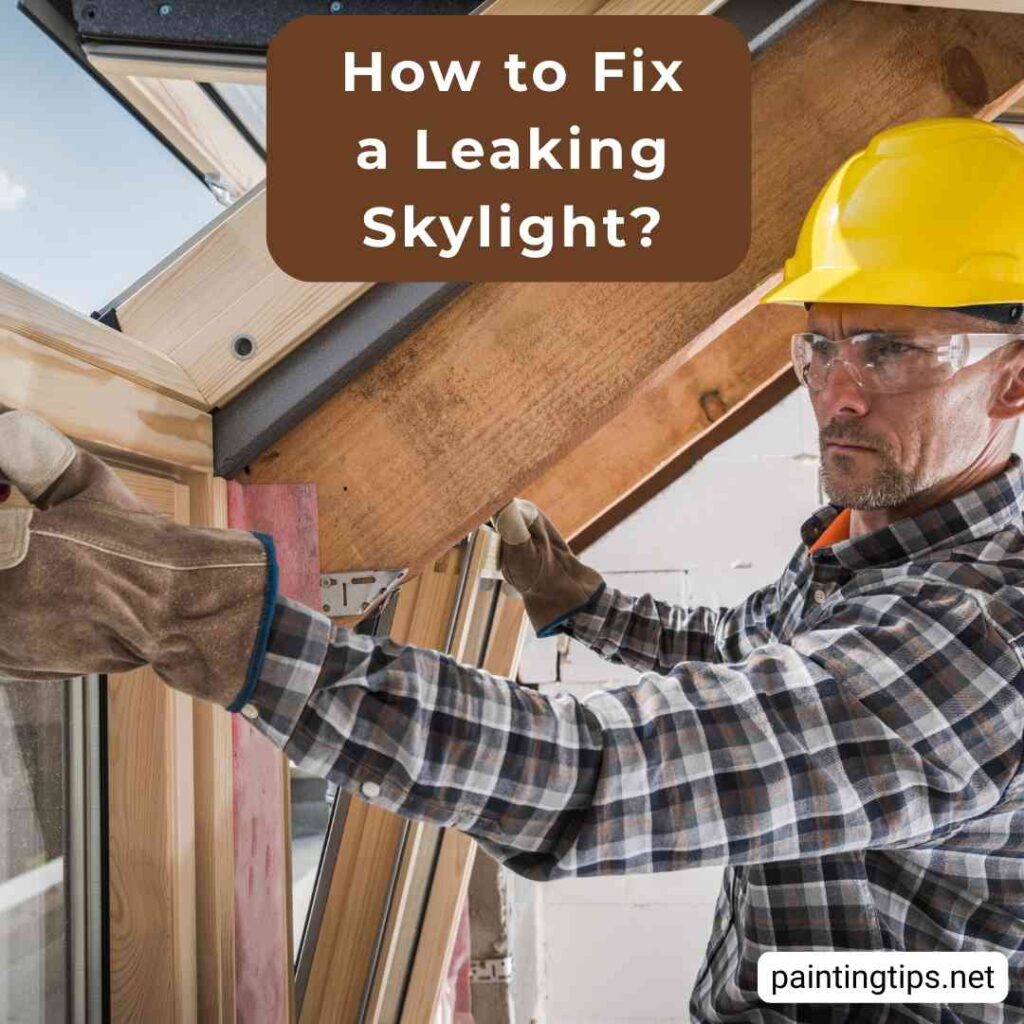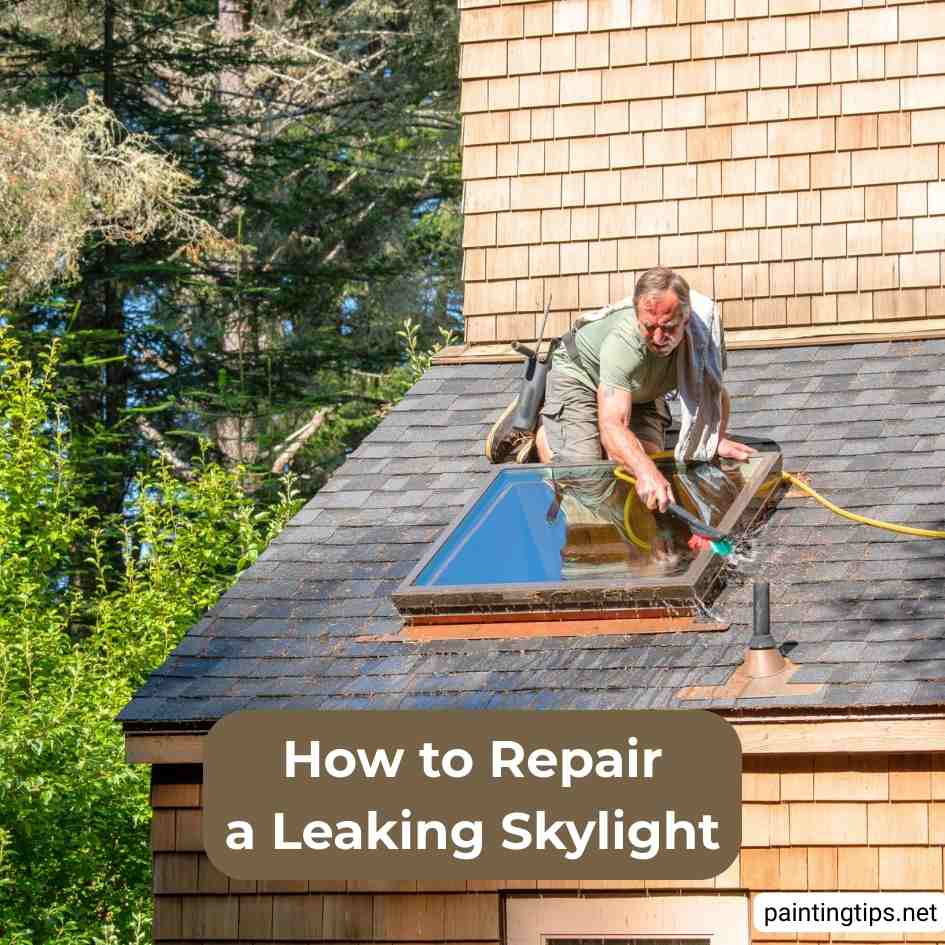Skylights flood your home with natural light and fresh air, creating brighter, more open living spaces. However, when a skylight begins to leak, it can quickly become a frustrating and costly issue. Water stains, mold growth, or even structural damage may occur if the problem is not addressed right away. This guide covers everything you need to know about skylight leak repair—from spotting the first signs of a leak to carrying out repairs, preventing future issues, and deciding when to call a professional.
Leaking Skylight Repair Guide

Repairing a leaking skylight doesn’t always mean replacing the entire unit. Many leaks can be fixed with simple maintenance, resealing, or replacing small parts. Understanding the causes and solutions will help you save time and money while protecting your home from water damage.
1-Clean the Skylight and Surrounding Area
Before beginning any repair, always clean the skylight glass, frame, and the roofing area around it. Debris such as leaves, dirt, and moss can block drainage paths and make leaks worse. Cleaning also allows you to clearly see cracks, gaps, or worn seals.
Use a mild glass cleaner for the skylight pane. Gently remove moss or algae around the skylight and nearby shingles using a soft brush. Clear out drainage channels to prevent water buildup.
2-Identify the Source of the Leak
Water can enter from several different areas surrounding the skylight. To test where the water is entering, use a garden hose to spray different areas of the skylight. Common signs and causes of leaks include:
- Interior Water Stains: Yellow or brown stains on ceilings or walls near the skylight.
- Musty Odors: Persistent damp smells indicating trapped moisture.
- Condensation: Excessive condensation between glass layers, showing seal failure.
- Loose or Missing Screws: Allowing water to seep inside.
- Cracked skylight glass: Even minor cracks in the skylight can allow water to seep inside.
- Damaged Frame: Warped or rotting frames, especially on wooden skylights.
- Deformed Gaskets and Seals: Rubber parts shrinking or cracking over time.
- Worn Flashing or Caulk: Old, brittle materials losing their waterproofing ability.
3-How to Repair a Leaking Skylight

Repairing a leaking skylight can range from a simple touch-up to a more involved project, depending on what’s causing the issue. If the skylight glass is cracked, the best solution is to replace the entire pane rather than rely on temporary tape fixes, which won’t hold up over time. When the frame itself is damaged, you can restore it by using the appropriate filler — acrylic wood filler for wooden frames or a rust-proof filler or coating for metal ones.
Sometimes, the problem lies in the roofing around the skylight. In that case, replace any cracked or missing shingles or tiles with matching materials to maintain a proper seal. If the leak comes from worn-out seals, install new weather-resistant gaskets or flashing to keep water out. You should also check for loose screws, as tightening or replacing them with corrosion-resistant ones can help prevent moisture from seeping in.
Finally, inspect the caulking or silicone around the skylight. Remove any old, deteriorated sealant and apply a fresh layer of waterproof silicone caulk around the edges to create a strong, watertight barrier. Taking these steps ensures your skylight remains leak-free and well-protected against future water damage.
4-Temporary Fixes for Skylight Leaks
When you can’t fix a skylight right away, temporary solutions can help minimize water damage:
- Use roofing tape to cover cracks or gaps around the skylight for a temporary seal.
- Use a plastic tarp secured with weights or nails to cover the skylight during heavy rain.
- Spray a rubberized leak sealant as a quick protective layer until professional repairs can be made.
Remember: These fixes are only temporary. Long-term solutions require proper repair or replacement.
5-Cost of Skylight Leak Repair
Skylight leak repair costs vary based on how extensive the damage is:
- Minor Repairs (resealing, tightening screws, replacing caulk): $100–$300
- Moderate Repairs (flashing replacement, fixing frame damage): $300–$700
- Major Repairs or Replacement (new skylight installation): $800–$2,500+
Regular maintenance is always cheaper than emergency repairs.
6-When to Call a Professional for Skylight Leak Repair
While DIY fixes can handle minor leaks, some skylight problems are best left to professionals. If you notice severe or widespread leaks, it may indicate deeper issues that simple repairs can’t solve. Structural damage around the skylight area also requires expert attention, as it can compromise your roof’s integrity.
You should also call a professional if the skylight glass is cracked or shattered since replacing it safely requires the right tools and experience. Finally, if leaks continue even after resealing or tightening the components, a roofing or skylight specialist can properly identify the root cause and ensure your skylight is watertight and energy-efficient.
7-Schedule Regular Maintenance
Preventative care can save you from costly skylight leak repairs in the future:
- Inspect your skylight at least once a year, preferably before winter.
- Keep gutters, drains, and flashing areas clear of debris.
- Reseal skylight edges with waterproof caulk every few years.
- Always use high-quality, UV- and water-resistant materials when repairing your skylight.
- Clean the skylight glass regularly to prevent buildup that can trap moisture.
Conclusion: Keep Your Skylight Bright and Leak-Free
A leaking skylight doesn’t have to mean a total replacement. By cleaning, inspecting, and making small repairs early, you can extend the life of your skylight and avoid expensive water damage. Temporary fixes can buy you time, but for lasting results, proper skylight leak repair—or in some cases replacement—is essential. With regular maintenance and attention, your skylight can continue to brighten your home for years to come without the worry of leaks. “You may also be interested in: Painting galvanized steel roofing“